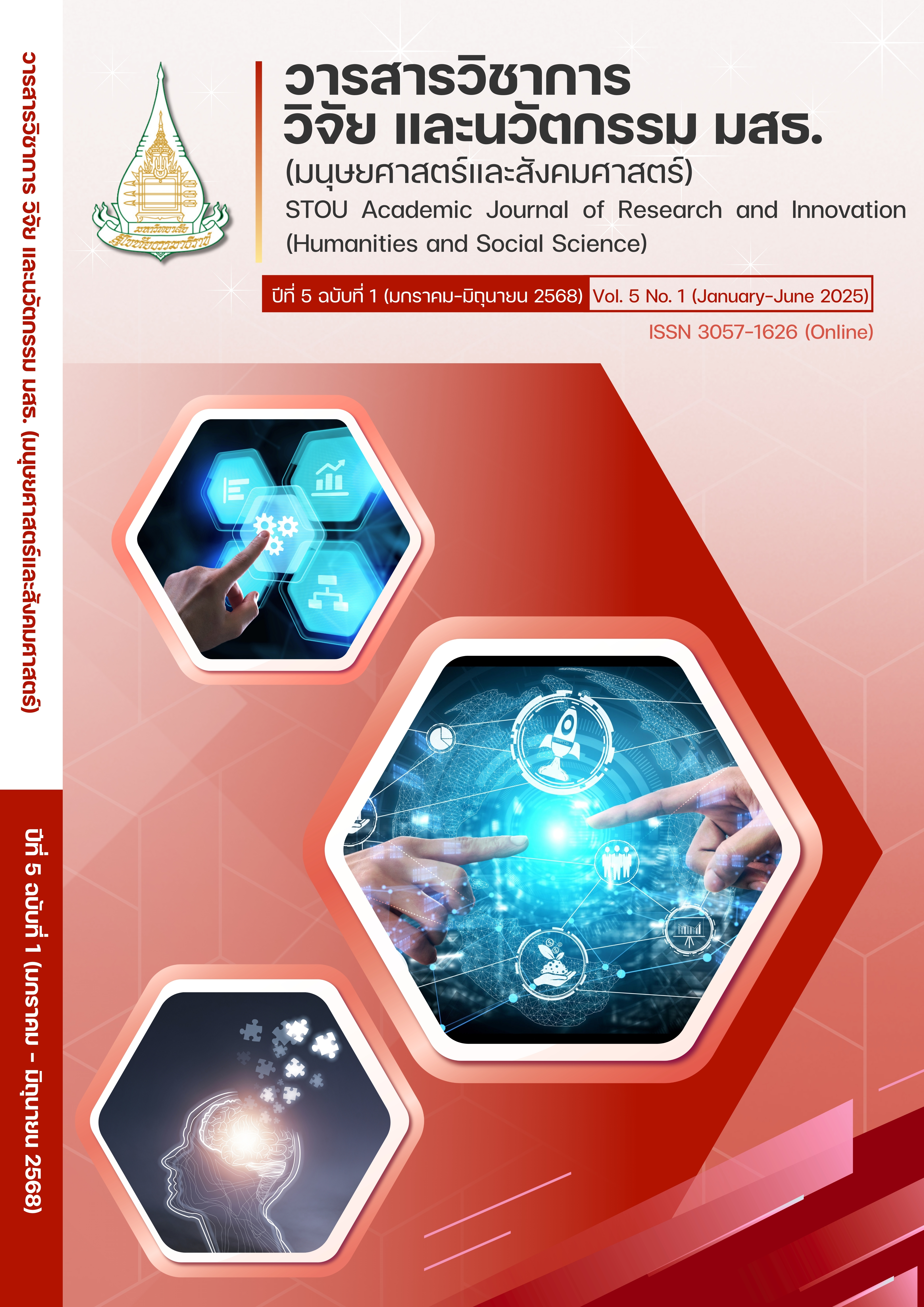Experiential Learning of Bachelor of Communication Arts Students in Integrating Teaching and Learning with the Thai Media Fund
Keywords:
Authentic Learning, Communication Arts Program, Integration of Teaching and Learning, Thai Media FundAbstract
This classroom action research on experiential learning among students in the Bachelor of Communication Arts program, integrating teaching and learning with the Thai Media Fund, aims to: (1) analyze student groups based on their aptitudes for authentic learning in the Communication Arts program through the integration of teaching and learning with the Thai Media Fund; (2) explore the authentic learning experiences of students in this program through such integration; and (3) present the outcomes of authentic learning for Communication Arts students within this integrated approach. The research employed a qualitative methodology, selecting key informants through purposive sampling. The participants included 25 students enrolled in the course “Communication for Development in the Southern Border”, who were engaged through focus group discussions and observations based on their roles in the authentic learning process. Additionally, three media production experts and communication scholars were interviewed in-depth. Data were analyzed using descriptive analysis and triangulation techniques for validation.
The findings reveal that authentic learning experiences for students, facilitated through collaboration with external organizations, should begin with flexibility in course structures and work schedules. Instructors should employ diverse teaching strategies in the classroom to help students effectively apply concepts, principles, and theories in real-world practice. Prior to engaging in authentic learning, instructors should assess students' aptitudes to ensure they enjoy their work and can integrate their knowledge, skills, and personal interests into practical applications. This integration with external organizations, aligned with their field of study, helps address the needs of all stakeholders, including academic programs, instructors, students, and external organizations or workplaces.
References
กองยกระดับคุณภาพการจัดการศึกษาระดับอุดมศึกษา. (2567). การวิเคราะห์ความสัมพันธ์ของปัจจัยแห่งความสำเร็จของหลักสูตรสหกิจศึกษาและการศึกษาเชิงบูรณาการกับการทำงานในการสร้างสมรรถนะบัณฑิตไทยให้พร้อมสู่โลกแห่งการทำงาน. สำนักงานปลัดกระทรวงการอุดมศึกษา วิทยาศาสตร์ วิจัยและนวัตกรรม.
คณะกรรมการปรับปรุงหลักสูตรนิเทศศาสตรบัณฑิต. (2568). รายงานผลการศึกษาความต้องการจำเป็นและการวิเคราะห์สภาพแวดล้อมในการปรับปรุงหลักสูตรนิเทศศาสตรบัณฑิต สาขาวิชานิเทศศาสตร์. คณะวิทยาการจัดการ มหาวิทยาลัยราชภัฏยะลา.
น้ำฝน แหวนเงิน. (2567). การเรียนการสอนวิทยาศาสตร์ในยุคดิจิทัล: นวัตกรรมและแนวทางใหม่ในการศึกษา. วารสารปัญญาลิขิต, 6(2), 28-40.
พิชชาญา เจียมกิจวัฒนา, และรัตนพงษ์ สอนสุภาพ. (2567). ความก้าวหน้าที่เปลี่ยนสายอาชีพนิเทศศาสตร์ในจังหวัดเชียงใหม่. วารสารปรัชญาปริทรรศน์, 29(2), 79-90.
วิเลิศ ภูริวัชร. (2568). Future of Jobs 2025. จุฬาลงกรณ์มหาวิทยาลัย.
ศิระ ประเสริฐศักดิ์, อรุณกมล จันทรส, กาญจนา บุญส่ง, และนิภา เพชรสม. (2566). การวัดและประเมินผลการเรียนรู้ตามสภาพจริงในยุคดิจิทัล. วารสาร มจร เพชรบุรีปริทรรศน์, 6(2), 83-99.
Bandura, A. (1977). Social learning theory. Prentice-Hall.
Beard, C., & Wilson, J. P. (2006). Experiential learning: A best practice handbook for educators and trainers. Kogan Page.
Bloom, B. S. (1956). Taxonomy of educational objectives: The classification of educational goals. Longmans, Green.
Gardner, H. (1983). Frames of mind: The theory of multiple intelligences. Basic Books.
Kolb, D. A. (1984). Experiential learning: Experience as the source of learning and development. Prentice-Hall.
Kolb, D. A. (2015). Experiential learning: Experience as the source of learning and development (2nd ed.). Pearson Education.
Downloads
Published
How to Cite
Issue
Section
License
Copyright (c) 2025 STOU Academic Journal of Research and Innovation (Humanities and Social Science) (Online)

This work is licensed under a Creative Commons Attribution-NonCommercial-NoDerivatives 4.0 International License.





